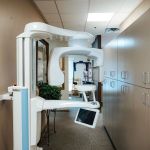
- Understanding Post-Extraction Oral Hygiene Challenges
- Essential Steps for Oral Care After Tooth Extraction
- Recommended Products and Tools for Post-Extraction Care
- Common Pitfalls and How to Avoid Them During Recovery
- Personal Experience: A Patient’s Recovery Story
- Importance of Follow-Up Visits and Professional Guidance
1. Understanding Post-Extraction Oral Hygiene Challenges
After a tooth extraction surgery, maintaining oral hygiene becomes both crucial and delicate. The extraction site is essentially an open wound that needs to heal properly without infection. However, the mouth is naturally filled with bacteria, and food particles can easily irritate or contaminate the surgical area. This delicate balance means that oral hygiene practices must be adapted carefully to promote healing while preventing complications such as dry socket or infection.
Patients often face the dilemma of wanting to keep their mouth clean but fearing to disturb the blood clot that protects the healing socket. Understanding these challenges helps shape a safe and effective post-extraction care routine.
2. Essential Steps for Oral Care After Tooth Extraction
2.1 Initial Care in the First 24 Hours
The first 24 hours post-surgery are critical. Avoid vigorous rinsing or spitting to preserve the blood clot. Gentle biting on gauze pads placed by your dentist helps control bleeding. Cold compresses applied to the cheek can reduce swelling, but oral hygiene should focus on areas away from the extraction site.
2.2 Gentle Cleaning Techniques After 24 Hours
After the initial day, it becomes important to start gently rinsing the mouth with a warm saltwater solution to keep the area clean. This soothes inflammation and helps prevent infection without disturbing healing tissues. Use a soft-bristled toothbrush to carefully clean teeth, avoiding direct contact with the extraction site.
Brushing other parts of the mouth thoroughly helps maintain overall hygiene, which is important because bacteria anywhere in the mouth can affect the healing process.
2.3 Hydration and Diet Considerations
Staying hydrated is vital to oral health and healing. However, avoid using straws as the suction can dislodge the clot. Soft, non-spicy foods such as yogurt, mashed potatoes, and smoothies provide nutrition without irritating the site. Gradually reintroduce harder foods only after clearance from your dentist.
3. Recommended Products and Tools for Post-Extraction Care
3.1 Antimicrobial Mouthwashes
Using prescribed antimicrobial or gentle fluoride mouthwashes helps reduce bacterial load and supports tissue healing. Avoid alcohol-based rinses in the early stages as they can cause dryness and irritation.
3.2 Soft-Bristled Toothbrushes and Oral Irrigators
Soft-bristled toothbrushes are essential to avoid trauma to sensitive gums. Oral irrigators or water flossers can assist in cleaning hard-to-reach areas without aggressive rubbing, but should be used cautiously near the extraction site under professional advice.
3.3 Pain Management Products
Topical gels and recommended over-the-counter pain relievers can make the healing process more comfortable, allowing patients to maintain their oral hygiene routines more easily.
4. Common Pitfalls and How to Avoid Them During Recovery
4.1 Disturbing the Blood Clot
One of the most common mistakes is accidentally dislodging the blood clot by vigorous rinsing, spitting, or sucking through straws. This can cause dry socket, a painful complication. Patients should follow gentle rinsing guidelines and avoid actions that create suction.
4.2 Neglecting Overall Oral Hygiene
Some patients avoid brushing altogether due to fear of disturbing the extraction site, which can increase bacterial buildup and delay healing. It’s important to continue careful brushing and flossing in other parts of the mouth to support recovery.
4.3 Ignoring Signs of Infection
Persistent pain, swelling, or unusual discharge should never be ignored. Early intervention by dental professionals improves outcomes. Using resources like Dentistry Toothtruth can help patients identify symptoms and access appropriate care swiftly.
5. Personal Experience: A Patient’s Recovery Story
Consider the experience of John, who underwent a complicated wisdom tooth extraction. Initially overwhelmed by the post-surgery care instructions, John struggled with keeping his mouth clean without causing pain. After a few days, he sought guidance from Dentistry Toothtruth, where he found customized product recommendations including soft toothbrushes and gentle mouth rinses tailored to his needs.
Following the advice, John developed a balanced routine that respected the healing process but maintained hygiene effectively. His recovery was smooth, and he avoided common complications like dry socket. John’s story underscores the value of personalized advice and access to trusted products during post-extraction care.
6. Importance of Follow-Up Visits and Professional Guidance
Finally, maintaining regular follow-up appointments with your dental care provider is crucial. These visits allow professionals to monitor healing, address concerns, and adjust care instructions based on progress. Professional cleanings and evaluations also ensure that no hidden issues develop as the extraction site heals.
Visiting Dentistry Toothtruth can connect patients with skilled practitioners and a wide selection of products to support every stage of recovery. Combining professional expertise with a diligent home care routine offers the best chance for a healthy, complication-free healing process.







 Corona Family Dental Group3.0 (42 review)
Corona Family Dental Group3.0 (42 review) Genesis Dental of Taylorsville4.0 (842 review)
Genesis Dental of Taylorsville4.0 (842 review) Edmond Dental Center: Michael Chandler, DDS5.0 (404 review)
Edmond Dental Center: Michael Chandler, DDS5.0 (404 review) Cash Family Orthodontics4.0 (141 review)
Cash Family Orthodontics4.0 (141 review) Spring View Dental Care4.0 (1298 review)
Spring View Dental Care4.0 (1298 review) Acworth Smiles Dentistry4.0 (145 review)
Acworth Smiles Dentistry4.0 (145 review) The Importance of Oral Health Education During Pregnancy for a Healthy Pregnancy
The Importance of Oral Health Education During Pregnancy for a Healthy Pregnancy Best Tips for Brushing Your Teeth Properly for Healthy Gums: Essential Techniques for Oral Health
Best Tips for Brushing Your Teeth Properly for Healthy Gums: Essential Techniques for Oral Health Why Skipping Dental Checkups Can Lead to Bigger Oral Health Problems
Why Skipping Dental Checkups Can Lead to Bigger Oral Health Problems Advantages of Porcelain Dental Restorations
Advantages of Porcelain Dental Restorations How Can Diabetes Cause Tooth and Gum Problems? Preventing and Managing Oral Health Issues
How Can Diabetes Cause Tooth and Gum Problems? Preventing and Managing Oral Health Issues Healthy Habits for Promoting Good Oral Health and Hygiene: Tips for a Healthy Smile
Healthy Habits for Promoting Good Oral Health and Hygiene: Tips for a Healthy Smile